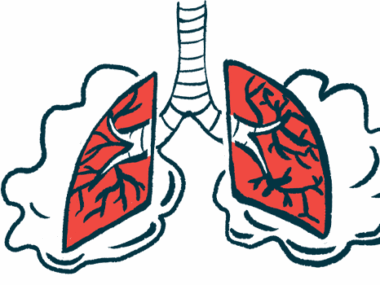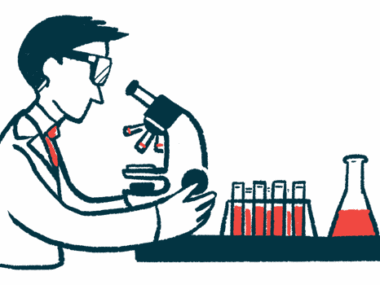Hydration and guaifenesin help keep my airway clear
Expelling mucus is a key part of breathing easier with COPD
Written by |

Note: This column describes the author’s own experiences with guaifenesin. Not everyone will have the same response to treatment. Consult your doctor before starting or stopping a therapy.
We always hear that we should “hydrate, hydrate, hydrate,” but I want to talk about why it’s especially crucial for those of us with chronic obstructive pulmonary disease (COPD).
Like a stream carrying debris, our blood helps to remove waste from our bodies. When we’re dehydrated, our blood thickens, causing our heart to beat faster in an effort to continue moving blood throughout the body. Over time, dehydration can strain the heart and increase the risk of such complications as high blood pressure and blood clots. It’s essential to stay hydrated by sipping water throughout the day, rather than gulping a large amount infrequently.
For those of us with COPD, hydrating helps to thin and clear mucus from our lungs. That’s important because it can improve our breathing and help us avoid infections or exacerbations.
But even with adequate hydration, many of us still have difficulty expelling mucus. In that case, our doctors may recommend that we use mechanical airway clearance devices or take the expectorant guaifenesin (the active ingredient in Mucinex, among other medicines).
My breathing has greatly improved with guaifenesin. When I take the expectorant and use my portable oxygen concentrator, my oxygen saturation level remains steady. Without them, my oxygen level falls below 88%. (Normal for most people would be 95% or higher.)
However, I’ve had to consider whether the benefits of taking guaifenesin outweigh the downsides. The medication works by reducing the viscosity and increasing the volume of mucus, making it easier to cough up. It’s not a cough suppressant, but it can make a cough more productive. That may sound gross, but it’s important to understand how the drug works.
Hydration is crucial for guaifenesin to work effectively, as fluid is key to thinning mucus. We might say that guaifenesin is the broom, but water is the hand that wields the broom.
While guaifenesin is generally tolerated well, the Mayo Clinic notes that it may cause some side effects, such as stomach pain, dizziness, or headache. These issues may disappear as your body adjusts to the treatment.
Because renal impairment has been reported by some people taking guaifenesin, I became a little concerned about my kidney health. In my case, however, the risk seems to be extremely small. Since my kidney function is monitored regularly, I feel comfortable taking the medication.
In the rhythm of chronic illness, we learn to become stewards of our lungs and make choices that honor our health. In the end, clearing the way for breath is not a single act, but a lifelong tending. And every breath made easier is a quiet triumph worth honoring.
Note: COPD News Today is strictly a news and information website about the disease. It does not provide medical advice, diagnosis, or treatment. This content is not intended to be a substitute for professional medical advice, diagnosis, or treatment. Always seek the advice of your physician or other qualified health provider with any questions you may have regarding a medical condition. Never disregard professional medical advice or delay in seeking it because of something you have read on this website. The opinions expressed in this column are not those of COPD News Today or its parent company, Bionews, and are intended to spark discussion about issues pertaining to chronic obstructive pulmonary disease.






Michael
I apologize for adding a link, but I believe it might help to clarify my question. I’ve been reading about the experiences shared in this article regarding hydration and guaifenesin for managing COPD symptoms. I’m curious about the specifics of guaifenesin itself and how it compares to products like Gufensin. Could you shed some light on the differences in dosage or potential side effects between these two? More details on Gufensin can be found here: https://pillintrip.com/medicine/gufensin. Thank you for your insights!
Monroe Williams
I read every article Caroline writes, and usually follow many of her recommendations. I have read most of these elsewhere at sometime, but hearing it from someone that suffers as I do, seems to have a more valid case. Please continue as I hope to have another ten years of life. I was diagnosed with/ “ mild to severe COPD 14 years ago, when I was 68 years old. I’m only 82 now.
dawn sheakley
i love reading your articles! its hard to find people who get it. at 63 i had to quit my job now at 64 im still trying to organize my surroundings to my changing needs especially since i live alone. keep up the good work!😊❤️
David A Sylvester
I am another Mucinex user--2X a day. I also sip water all day. I have COPD and mild bronchiectasis so I nebulize sodium chloride to help with airway clearance. It all seem to work--no chest infections for over a year!!!!!..Thanks Caroline
Kathleen Matthews
Thank you, Caroline - for this, and for all of your helpful posts!
Marieta Diane Golding
In Australia there is Bisolvon (brohexine hydrochloride) and is not mentioned on any of the brand names for guaifenesin. It is a mucus thinner that works well. Find it's only needed in winter when mucus seems to thicken perhaps due to high humidity with rain. Happily don't produce much mucus at all but just a very small amount will badly impinge on breath flow.
Julie Woodman
Guaifenesin I have used in the past, but found something better. On my one trip to hospital they gave me a very old fashioned medicine called Senega and ammonia. It worked wonderfully, and I now always keep a bottle at home. It might be hard to find, but pharmacies should stock it.
I worked in a pharmacy when I was younger, a time when the apprentice had to make various medications as part of their training. The young guy called it witches brew, maybe because it was such an old remedy. You only trusted new, modern medicines in the 60's. It is still around, and I recommend trying it if you have stubborn mucus. It can taste a bit icky, but some brands add aniseed flavour which is an improvement.